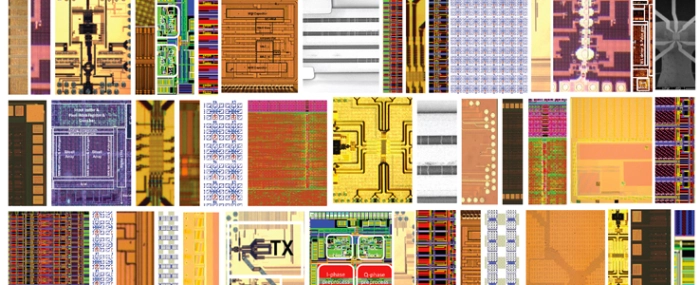
© DARPA
Components |
Beyond Moore's Law and further
HIVE comes at a time when the microsystems technology community is facing an array of long-anticipated obstacles to its relentless and storied decades-long march of progress.
The microelectronics revolution—which began after World War II with the invention of the transistor and led to today’s chips bearing billions of these now astoundingly minuscule digital switches—has arrived at an inflection point, beyond which innovators will no longer be able to rely solely on the benefits of cramming more and more electronic devices into smaller and smaller spaces.
“For nearly seventy years, the United States has enjoyed the economic and security advantages that have come from national leadership in electronics innovation,” said Bill Chappell, director of DARPA*’s Microsystems Technology Office (MTO), which will lead the new effort. “If we want to remain out front, we need to foment an electronics revolution that does not depend on traditional methods of achieving progress. That’s the point of this new initiative – to embrace progress through circuit specialization and to wrangle the complexity of the next phase of advances, which will have broad implications on both commercial and national defense interests.”
There always has been a finish line on the horizon. The saga of electronics miniaturisation that has yielded ever more computing power at ever-lower unit costs—represented by the famed Moore’s Law (named after Intel’s co-founder Gordon Moore)—has always been destined to encounter the limitations of both physics and economics. As this inflection point nears, continued progress in microelectronics will require a new phase of innovation to keep the modern miracle of electronics innovation moving forward.
DARPA’s Microsystems Technology Office created the Hierarchical Identify Verify & Exploit (HIVE) program to develop new technologies to realize 1'000x performance-per-watt gains in the ability to handle graph analytics. Intel’s Data Center Group (DCG), Platform Engineering Group (PEG) and Intel Labs will work as one of the hardware architecture research performers for DARPA HIVE, with a joint research program between Intel and DARPA valued at more than USD 100 million during a 4½-year effort.
“By mid-2021, the goal of HIVE is to provide a 16-node demonstration platform showcasing 1,000x performance-per-watt improvement over today’s best-in-class hardware and software for graph analytics workloads,” said Dhiraj Mallick, vice president of the Data Center Group and general manager of the Innovation Pathfinding and Architecture Group at Intel. “Intel’s interest and focus in the area may lead to earlier commercial products featuring components of this pathfinding technology much sooner.”
-----
Image Caption: The patchwork of microelectronic dies represents work performed by a multitude of university groups that participated in previous DARPA-industry-academe collaborations. DARPA’s new electronics initiative is pushing for a new era of microsystem structures and capabilities. Click on the image for a high-resolution version.
* DARPA = Defense Advanced Research Projects Agency

